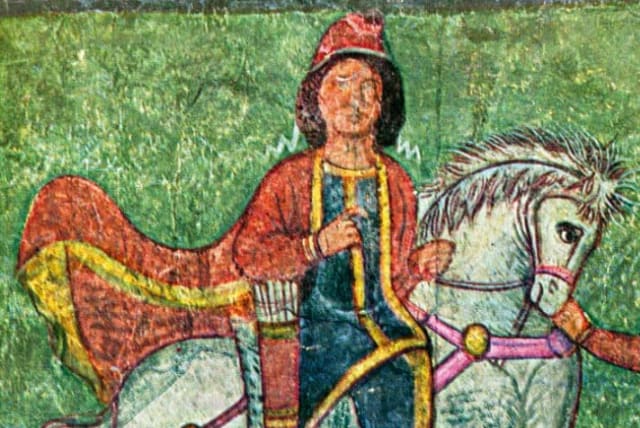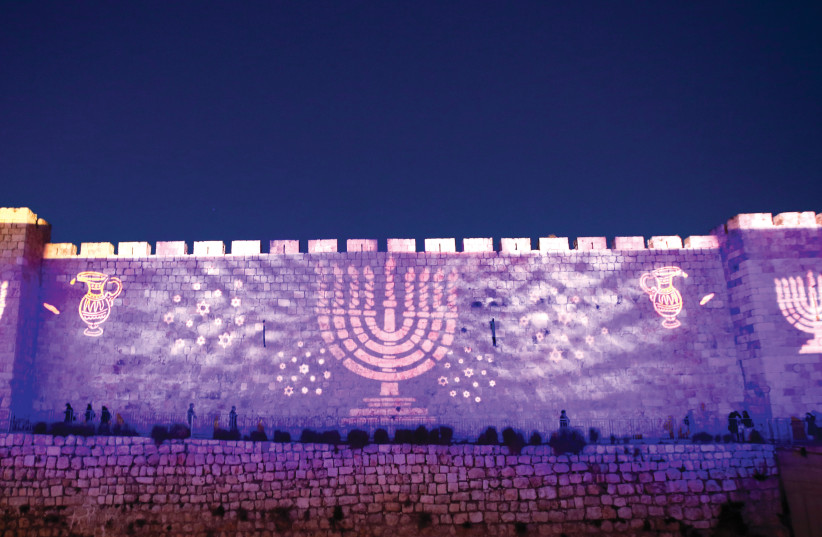Why do we celebrate happily when the month of Adar comes? - opinion

If we examine the actual events of the Purim story, it seems we ought to downplay the merriment and lower the laughter at Adar’s beginning.
Mishe’nichnas Adar, marbim b’simcha. When (the month of) Adar comes in, we increase our joy.
I’ve never quite understood this well-known phrase. Of course, the obvious implication is that Adar contains the holiday of Purim, which is arguably the most raucous, let-it-all-go holiday of the Jewish year. The parties, the costumes, the festive reading of the megillah – both night and day – when we actually encourage the crowd to make noise – and, of course, the booze-bearing Purim seudah (meal) all combine to take this celebration way, way over the top.
I get that. But what I don’t understand is why the advent of Adar should be a time of increased exuberance. For if we examine the actual events of the Purim story, it seems we ought to downplay the merriment and lower the laughter at Adar’s beginning. Because as Adar begins, the Jewish community of Persia is in dire straits. Haman the Amaleki, backed fully by the king, is poised to attack the Jews wherever they may be found, determined to wipe them out, “from the young to the old.”
Moreover, the Jews are a divided lot (pun intended), with many having adopted Persian customs and feeling quite certain that they enjoy a privileged status. They disregarded Mordechai’s plea to stay away from Ahasuerus’s grand banquet and so joined in the orgiastic festivities, despite the monarch brazenly using vessels from the recently ravaged Temple.
Purim’s scenario is remarkably similar to that of the Hanukkah story, which will occur much later in history. There, too, the beginning of the saga is quite ominous. Mattityahu and the Maccabees will lead a mini-civil war, designed to eradicate the Hellenist influence that has permeated Israel’s society. Only when the Jewish renegades have been purged and the nation united in faith can the Maccabees turn their attention to routing the Syrian-Greeks and expelling them and their foreign culture from the Holy Land.
Model of Jewish life: Impending doom followed by miraculous rescue
This pattern of impending doom followed by miraculous rescue seems to be a model for Jewish life throughout the ages. We saw it when our backs were to the (sea) wall as Pharaoh’s chariots threatened to exterminate us. We experienced it when Nasser, for his part, vowed to drive us into the sea in 1967, and we consecrated large tracts of land for cemeteries to accept the dead.
In both of these frightening instances as well, we not only weathered the storm but achieved a truly smashing victory, miraculously sending the Egyptians to a devastating defeat.
IN THE cases of Purim and Hanukkah, we were saved by two primary factors: fear and faith. Our lives literally hung in the balance on Purim, and that impending, awesome fear motivated and mobilized us to come together in fasting and prayer, reaffirming our Jewish identity, thus enabling us to organize militias that would beat back Haman’s hordes.
On Hanukkah, we came to realize that our own unique way of life far outshone the idolatrous practices of Greece, and that energized our will to eradicate the cancer in our midst.
All this brings home the conclusion that perhaps it is indeed the very trepidation, the sincere concern that we might lose our grip on our national and spiritual identity, that compels us to right ourselves and save the nation. It is a call to action in the face of impending disaster that dispels the complacency and rallies the troops to battle before it is too late. It is, in short, the danger of the month’s beginning that provokes the miracle of the ides of Adar.
Which brings us to our present-day predicament. We are, beyond a shadow of a doubt, a divided society in every sense of the word. Half the population is adamantly opposed to the sentiments of the other half, as evidenced by the massive, almost unparalleled protests on a continuing basis, as well as the razor-thin 51-49 majority in the Knesset.
The opposition feels abandoned even, as the coalition remains aloof. Rule by an uncompromising, iron hand has never worked vis-à-vis the Jewish people – in Israel as well as in the Diaspora – and power without partnership is surely a recipe for disaster.
The rabbis, among them Rabbi Moshe Feinstein, taught that Purim and Hanukkah are the only holidays that will endure in Messianic times, even when all the other holidays will have become extraneous. One reason is that, unlike the other festivals that were imposed upon us from above, these celebrations we earned ourselves, due to our own efforts, and so we are entitled to keep them for all time.
We have to draw upon this power that Purim and Hanukkah possess. We have to check our egos, act magnanimously and go the extra mile out of that very same fear and faith. Fear that if we continue to fragment, the glorious dream that is Israel will break apart, bit by bit. And faith that if we reach across the aisle to embrace a brother, every one of us will be the better for it.
Back in the days when I was a pulpit rabbi, I kept a sign on my desk: “When you are up to your neck in alligators, it doesn’t much matter that your intent was to clean the swamp.” Good advice in tough times – for both sides.
Jerusalem Post Store
`; document.getElementById("linkPremium").innerHTML = cont; var divWithLink = document.getElementById("premium-link"); if (divWithLink !== null && divWithLink !== 'undefined') { divWithLink.style.border = "solid 1px #cb0f3e"; divWithLink.style.textAlign = "center"; divWithLink.style.marginBottom = "15px"; divWithLink.style.marginTop = "15px"; divWithLink.style.width = "100%"; divWithLink.style.backgroundColor = "#122952"; divWithLink.style.color = "#ffffff"; divWithLink.style.lineHeight = "1.5"; } } (function (v, i) { });

